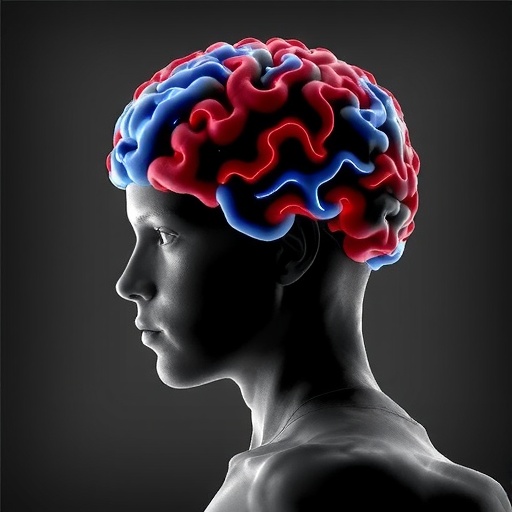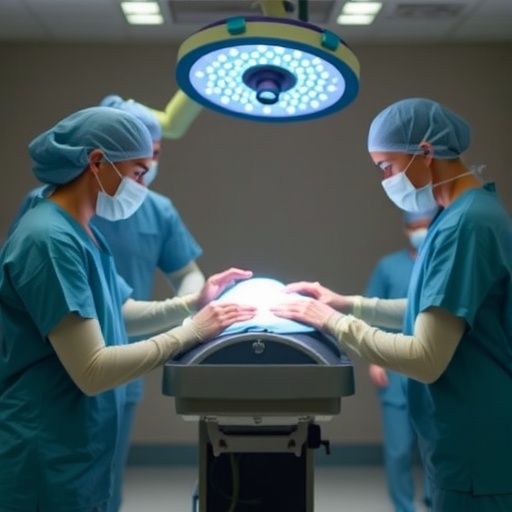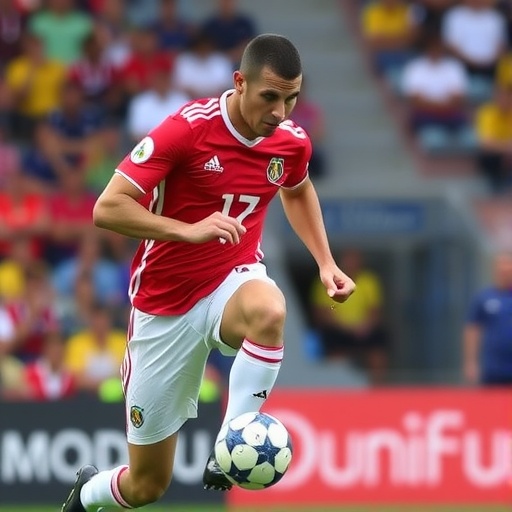A groundbreaking investigation spearheaded by eminent neuroscientists reveals that repetitive head trauma in young athletes initiates profound and early alterations in brain structure and function, fundamentally reshaping our comprehension of traumatic brain injury progression. Drawing on state-of-the-art molecular and cellular methodologies, the study rigorously analyzed postmortem brain tissue from athletes under 51 years old, predominantly American football players, uncovering neural deterioration and inflammation far preceding the classical hallmarks of chronic traumatic encephalopathy (CTE).
CTE, historically recognized through postmortem diagnosis marked by tau protein aggregation around blood vessels deep within the brain’s convolutions, may now be forewarned by subtler yet significant neuronal and vascular changes. The research team, leveraging tools developed through the NIH’s BRAIN Initiative®, employed sophisticated gene expression profiling and single-cell imaging techniques, elucidating cellular pathways previously inaccessible. This technical advancement allowed the scientists to detect a striking 56% reduction in specific neuronal subpopulations situated in regions vulnerable to biomechanical stress during head impacts, even in cases where tau pathology was absent.
The substantial neuronal loss challenges the traditional framework, indicating that axonal and cellular compromise occurs significantly earlier than detectable tau accumulation. Moreover, this neuronal attrition correlates closely with the duration of exposure to repetitive head impacts, underscoring a dose-dependent trajectory of brain injury seldom characterized in young cohorts. This discovery not only deepens insights into the insidious onset of neurodegeneration but also suggests potential biomarkers for presymptomatic diagnosis.
Concomitantly, the study observed a pronounced activation of microglia, the brain’s resident immune cells, which mount inflammatory responses upon injury or disease. These immune cells displayed increasing activation with extended years of contact sport participation, signifying a chronic inflammatory state potentially driving or exacerbating neuronal damage. The persistent neuroinflammation observed could be a key mechanistic link between repetitive mechanical stress and subsequent neurodegenerative cascades.
Alongside neuronal and immune alterations, the research unveiled notable molecular changes within cerebral vasculature. Detailed gene expression patterns indicated heightened immune surveillance activity, likely a response to localized hypoxia or ischemia induced by damaged vascular integrity. Structural modifications such as vasculature thickening and angiogenic growth were also documented, painting a complex picture of vascular remodeling in response to chronic trauma. The intricate crosstalk identified between activated microglia and endothelial cells suggests a novel cellular communication axis that might modulate the transition from acute injury to chronic neurodegeneration.
By directing focus onto younger athletes, this investigation diverges from conventional studies predominantly concerned with advanced CTE in older individuals. It exposes early cellular signatures that herald the path toward devastating brain disease years before clinical symptoms or typical pathological markers emerge. Such findings emphasize the necessity for earlier detection and intervention strategies aimed at mitigating long-term cognitive decline related to contact sports.
Dr. Walter Koroshetz, director of NIH’s National Institute of Neurological Disorders and Stroke (NINDS), highlighted the significance of these early brain changes as potential targets for novel diagnostics or therapeutics, envisioning a future where CTE is identifiable well before irreversible damage ensues. Parallelly, Richard Hodes, director of the National Institute on Aging (NIA), underscored how elucidating these early events could inform protective measures for young athletes and ultimately reduce dementia risk later in life.
This pioneering work forms a foundation for translational applications, advocating for the development of sensitive biomarkers, possibly rooted in molecular, imaging, or immunological signatures, which could revolutionize monitoring of athletes at risk. Furthermore, it propels research into pharmaceutical or lifestyle interventions that might disrupt or slow degenerative processes triggered by repetitive head impacts.
The implications of these findings extend beyond sports medicine into broader neurological research, advising policymakers, clinicians, and researchers on the paramount importance of early brain health surveillance in populations exposed to repetitive concussive and sub-concussive forces. Through cross-disciplinary collaboration and technological innovation, there exists a tangible path toward reshaping clinical paradigms surrounding traumatic brain injury and its neurodegenerative sequelae.
In conclusion, this compelling study catalyzes a paradigm shift from postmortem diagnosis of established CTE to a proactive understanding of early neural deterioration. It signals an urgent call to action within the medical and sports communities to prioritize brain injury prevention, optimized protective equipment, and routine monitoring protocols for athletes. As research progresses, the vision of intercepting and arresting the progression of CTE before devastating symptoms manifest appears increasingly attainable.
This investigation, meticulously funded by the NIH’s NINDS and NIA through a series of competitive grants, embodies a summit of modern neuroscientific inquiry. Its integration of high-resolution single-cell analyses with rigorous clinical data exemplifies how innovative technologies can elucidate complex neuropathological processes, offering hope for the millions of athletes worldwide who face the invisible threat of repeated head trauma.
Subject of Research: Neuropathological effects of repetitive head trauma in young athletes, focusing on early neuronal loss, microglial activation, and vascular molecular changes preceding chronic traumatic encephalopathy.
Article Title: Repeated head trauma causes neuron loss and inflammation in young athletes
News Publication Date: 17-Sep-2025
Web References:
NIH’s National Institute of Neurological Disorders and Stroke (NINDS): https://www.ninds.nih.gov/
National Institute on Aging (NIA): https://www.nia.nih.gov/
National Institutes of Health (NIH): https://www.nih.gov/
References:
Butler MLMD, Pervaiz N, Breen K, et al. Repeated head trauma causes neuron loss and inflammation in young athletes. Nature (2025). DOI: 10.1038/s41586-025-09534-6
Keywords: Neurodegeneration, Chronic Traumatic Encephalopathy, Tau Protein, Neuronal Loss, Microglia Activation, Brain Injury, Head Trauma, Sports Neurology, Blood-brain Barrier, Neuroinflammation, Cerebral Vasculature, Molecular Neuroscience
Tags: axonal compromise in sports injurieschronic traumatic encephalopathy indicatorsearly neuron loss in athletesgene expression profiling in brain studiesinflammation from head impactsmolecular neuroscience techniquesNIH BRAIN Initiative advancementspostmortem brain analysisrepetitive head trauma effectssingle-cell imaging in neurologytraumatic brain injury researchyoung athletes brain injury





